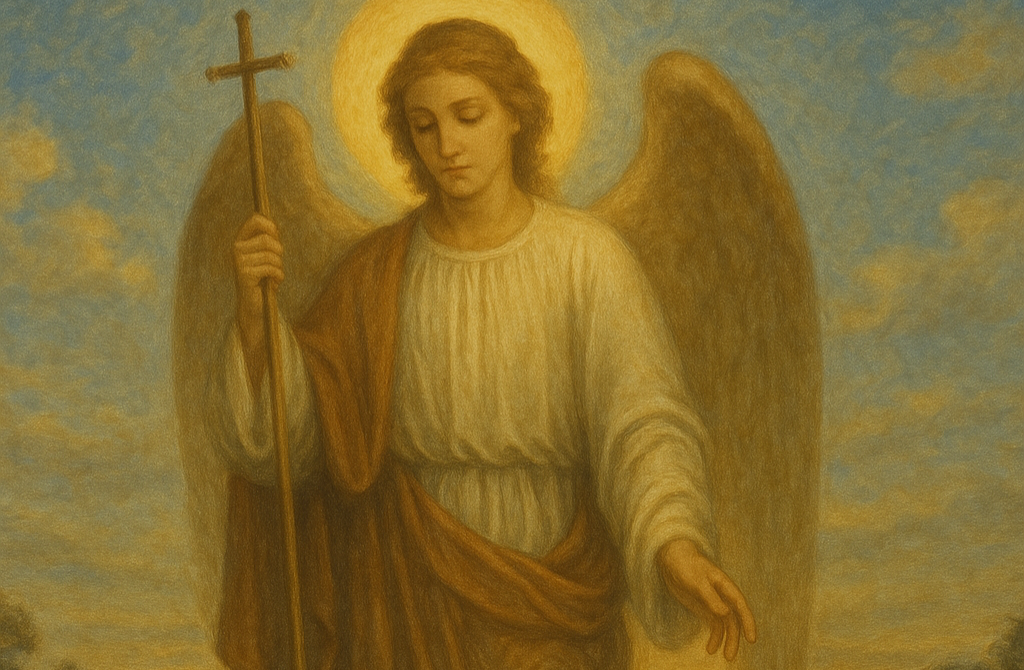The Angelus

The Angelus is a prayer commemorating the Annunciation, when the Angel Gabriel announced to Mary that she would be the Mother of Jesus. This prayer is traditionally recited three times a day: morning, noon, and evening.
History of The Angelus
The Angelus originated in the 13th century and became a common practice in the Catholic Church by the 14th century. Initially, this prayer was only recited in the evening to commemorate the Incarnation. Later, in the 15th century, Pope Calixtus III ordered the Angelus bell to be rung at noon to pray for victory over the Ottoman Turkish threat. Finally, the practice of praying the Angelus in the morning was added, resulting in the prayer being recited three times a day.
"The Angelus reminds us of the central mystery of our faith: the Incarnation of the Son of God. It is a simple prayer, which can be recited in the midst of daily activities, helping us to pause and reflect on the mystery of God becoming man." - Pope Francis
How to Pray The Angelus
The Angelus consists of three parts, each followed by a Hail Mary, and concluded with a closing prayer. It is traditionally prayed at 6 a.m., 12 noon, and 6 p.m.
Structure of The Angelus
Leader:
"The Angel of the Lord declared unto Mary."
Response:
"And she conceived of the Holy Spirit."
All:
"Hail Mary, full of grace, the Lord is with thee. Blessed art thou among women, and blessed is the fruit of thy womb, Jesus. Holy Mary, Mother of God, pray for us sinners, now and at the hour of our death. Amen."
Leader:
"Behold the handmaid of the Lord."
Response:
"Be it done unto me according to thy word."
All:
"Hail Mary, full of grace, the Lord is with thee. Blessed art thou among women, and blessed is the fruit of thy womb, Jesus. Holy Mary, Mother of God, pray for us sinners, now and at the hour of our death. Amen."
Leader:
"And the Word was made flesh."
Response:
"And dwelt among us."
All:
"Hail Mary, full of grace, the Lord is with thee. Blessed art thou among women, and blessed is the fruit of thy womb, Jesus. Holy Mary, Mother of God, pray for us sinners, now and at the hour of our death. Amen."
Leader:
"Pray for us, O Holy Mother of God."
Response:
"That we may be made worthy of the promises of Christ."
Leader:
"Let us pray:"
All:
"Pour forth, we beseech Thee, O Lord, Thy grace into our hearts, that we to whom the Incarnation of Christ, Thy Son, was made known by the message of an angel, may by His Passion and Cross be brought to the glory of His Resurrection. Through the same Christ our Lord. Amen."
When to Pray The Angelus
Traditionally, The Angelus is prayed at three times during the day:
- Morning (6:00 a.m.): To begin the day by remembering the mystery of the Incarnation and offering the entire day to God.
- Noon (12:00 p.m.): To pause in the midst of daily activities and reflect again on the mystery of the Incarnation.
- Evening (6:00 p.m.): To end the day with gratitude and reflect once more on the mystery of the Incarnation.
During the Easter season (from Easter Sunday to Pentecost Sunday), The Angelus is replaced by the Regina Coeli (Queen of Heaven) prayer.
Spiritual Meaning of The Angelus
The Angelus has profound spiritual meaning for Catholics:
- Commemorating the Incarnation: This prayer reminds us of the mystery of the Son of God becoming man through Mary's "Yes."
- Following Mary's Example: In this prayer, we are invited to follow Mary's example of accepting God's will with humility.
- Sanctifying Time: By praying The Angelus three times a day, we sanctify our time and direct our thoughts to God amid our daily activities.
- Deepening Devotion to Mary: This prayer helps us deepen our devotion to the Blessed Mother and her role in the plan of salvation.
Devotional Practice
Many Catholics make The Angelus a part of their daily devotion. Some churches and monasteries ring the Angelus bell to remind the faithful of this prayer time. Even at the Vatican, the Pope often leads the Angelus prayer on Sunday at noon, followed by a blessing and a brief message.
Artikel atau doa ini dapat disalin dan disebarluaskan dengan syarat mencantumkan sumber artikel dari www.doa-katolik.com